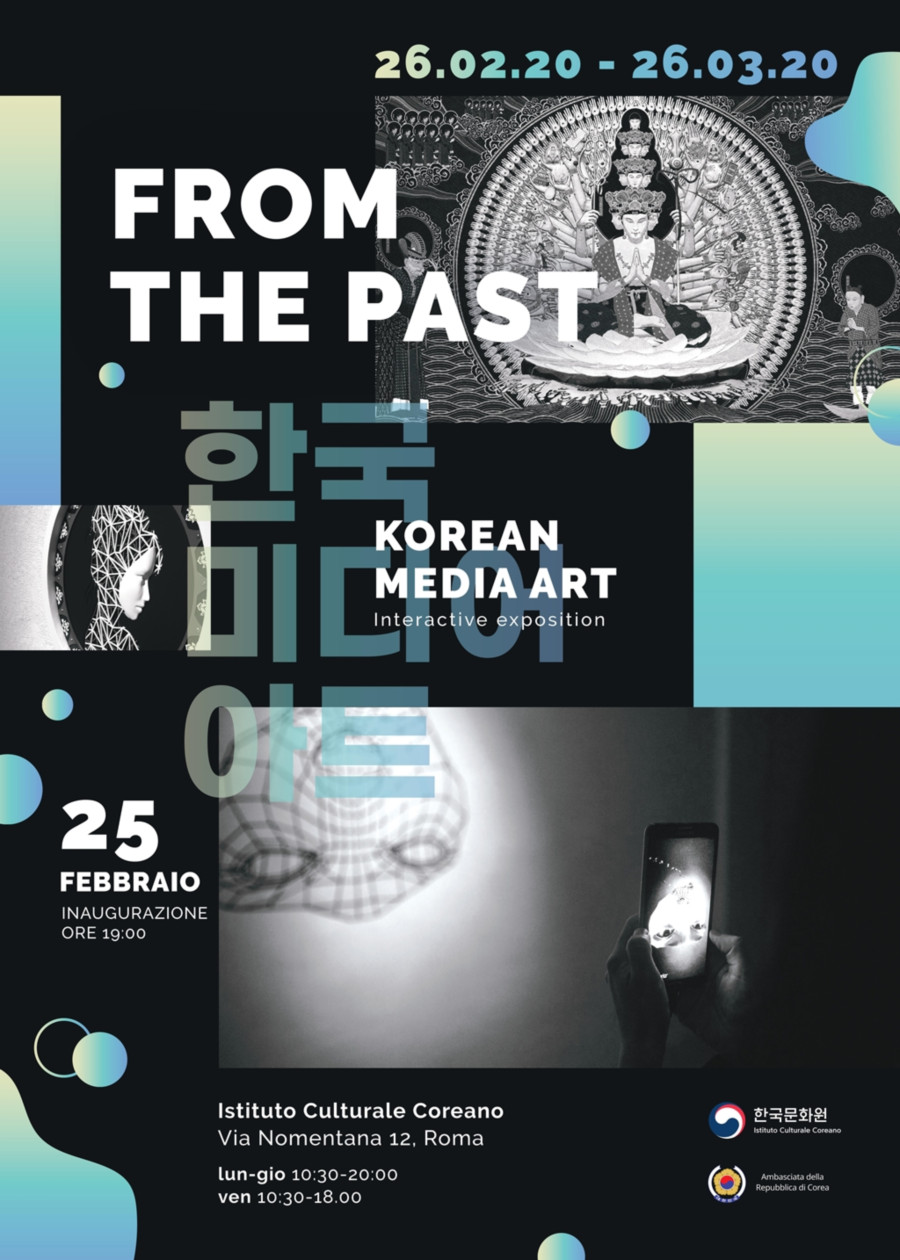
▲Photo 1_Korea Media Art Exhibition Press Conference
The Korean Cultural Center in Italy held a press conference on February 25, 2020 (Tuesday) at 11:30 am, opening the exhibition of Korean media art "From the Past".
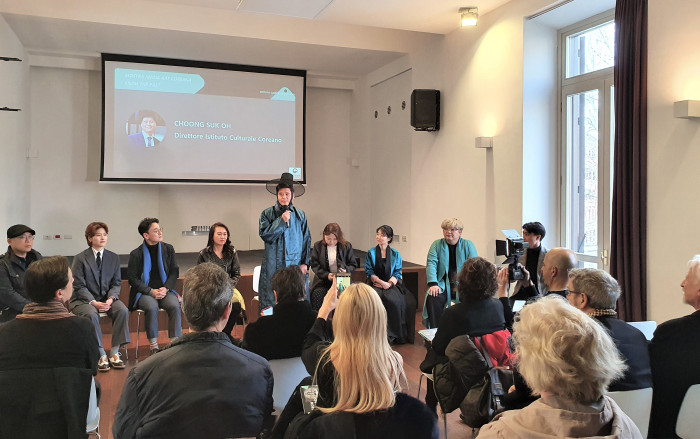
▲Photo 2_Korea Media Art Exhibition Press Conference
At the press conference, we had a time to introduce the Korean media art “From the Past” exhibition to local reporters.
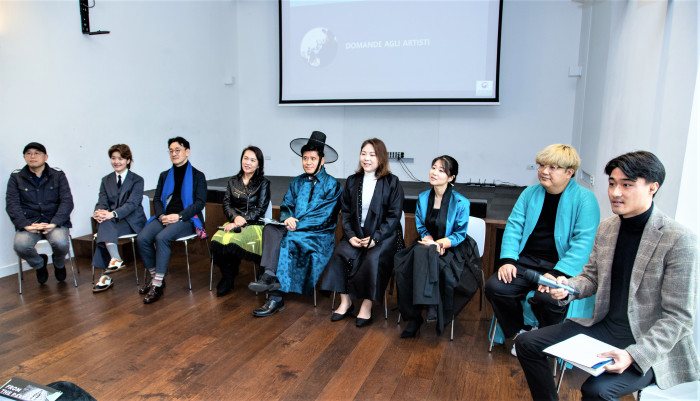
▲Photo 3_Korea Media Art Exhibition Press Conference
The press conference was attended by 9 reporters, including RyNews24 anchor Josephine Alessio, and Italian artists such as Massimo Bomba and Giulio Gorga.
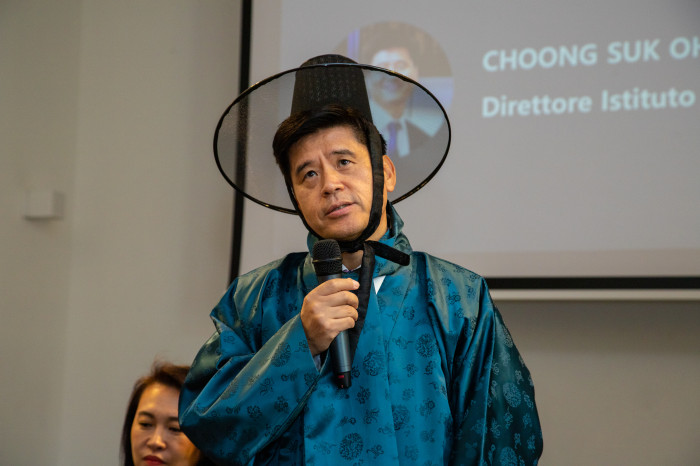
▲Photo 4_Korea Media Art Exhibition Press Conference.
“From the Past,” the director of the Cultural Center Oh Choong-suk, is an exhibition that expresses Korean traditional art through cutting-edge technology. It is not an exhibition in which visitors simply appreciate the work with their own eyes, but an experiential exhibition where visitors can communicate with art works through multimedia devices and hear and see the results. Furthermore, famous Western paintings can be interpreted through Korean media art. For example, you can turn Mona Lisa's pale smile into a wide smile.”
Curator Kim Min-kyung said, “I am very happy to hold the exhibition in a country with a deep culture and history like Italy. Through this exhibition, I hope that Italian people will be more interested in Korean culture.”
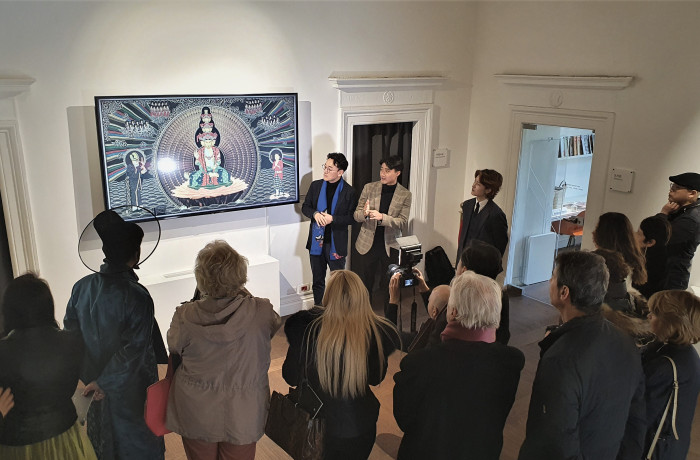
▲Photo 5_Korea Media Art Exhibition Press Conference
Immediately following the introduction of the artists and brief descriptions of the works on display. Professor Seong Jeong-hwan introduced the room of the "past", the writer Han Seung-gu introduced the room of the "present", and finally, the writer group Le Congpoje introduced the room of the "future" to reporters. The exhibition is divided into three halls: the past, the present, and the future, and shows the potential that Korean traditional culture can unfold in the future by reinterpreting it through media art, a modern technology inspired by the past.
In addition, as communication and experience are important for this exhibition, reporters had time to experience the exhibition in person, such as touching items and listening to sounds.
In the hall of Professor Seong Jeong-Hwan's past (center hall), through the genre paintings of Kim Hong-do and Shin Yun-bok during the Joseon Dynasty, or through Buddhist paintings such as Cheonsu Gwaneum-do, visitors could experience traditional Korean paintings, the sound of musical instruments, and the movement of characters.
In the current hall of Han Seung-gu (the exhibition hall on the right), you can play a drum, a traditional Korean instrument, or project your own shadows to compare the portraits of Joseon dynasty officials and the appearance of the modern public while contemplating personal identity in the modern society.

▲Photo 6_Reporter Rosario Tronnolone of Radio Vaticana is experiencing the works of Han Seung-koo in the'Current Room'
In particular, through a media art work called'Networked Identities', you can experience a variety of egos internally while directly hitting the drums. As reporters experienced this work, they were very interested in finding the subject and commonality of the Italian literary Pirandello's novel "Someone who is nobody but 100,000 people" in 1800. In particular, I was admired that the profound subject of life was well expressed in the appearance of the protagonist changing according to the sound of the drum through the act of playing the drum.
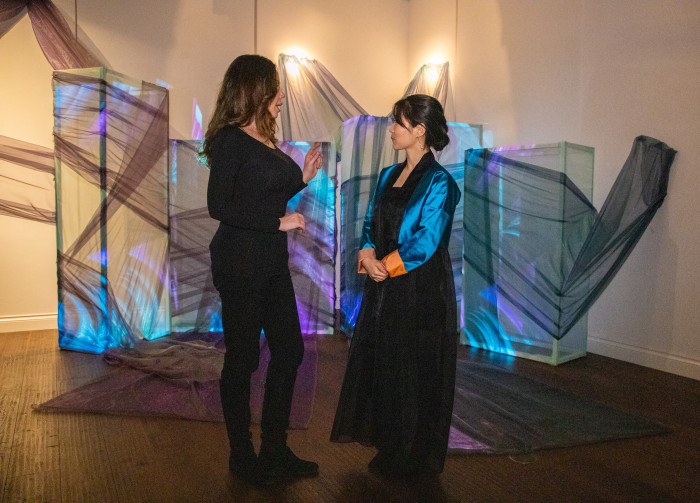
▲Photo 7_ Yi Seul Jung of the artist group Le Congpoje explains the work of the'Room of the Future' to the anchor Josephine Alessio of 'RaiNews24'
Lastly, in the future hall of the “Le Congpoge” group, I saw the reinterpretation of the world view of the 19th century talented Korean calligrapher Chusa Kim Jeong-hee through various images and sound effects. In particular, the fonts of his representative works,'Yu Hee Sammae' and'Calculation Mujin', were reinterpreted using 3D space in connection with the shape of modern Hangeul. In addition, the sound effects that fill the space were evaluated as well expressing the artistic philosophy of calligrapher Kim Jeong-hee who crosses the past and the future through subtle changes.
Reporters finished viewing and experiencing the exhibition with Korean media art curators and writers, and tasted bibimbap and sikhye, one of the representative Korean foods.
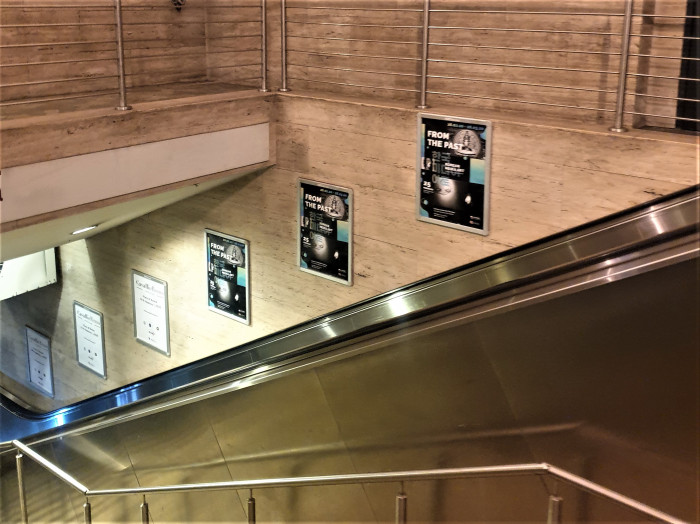
▲Photo 8_The poster of the exhibition at Roma Termini Central Station
Meanwhile, 300 posters for the Korean media art exhibition were posted on 20 major subway stations in Rome from February 13 to 26. Also, through the Cultural Center Facebook, Instagram, YouTube, etc. You can meet the promotional video of the Korean media art “From the Past” in person.